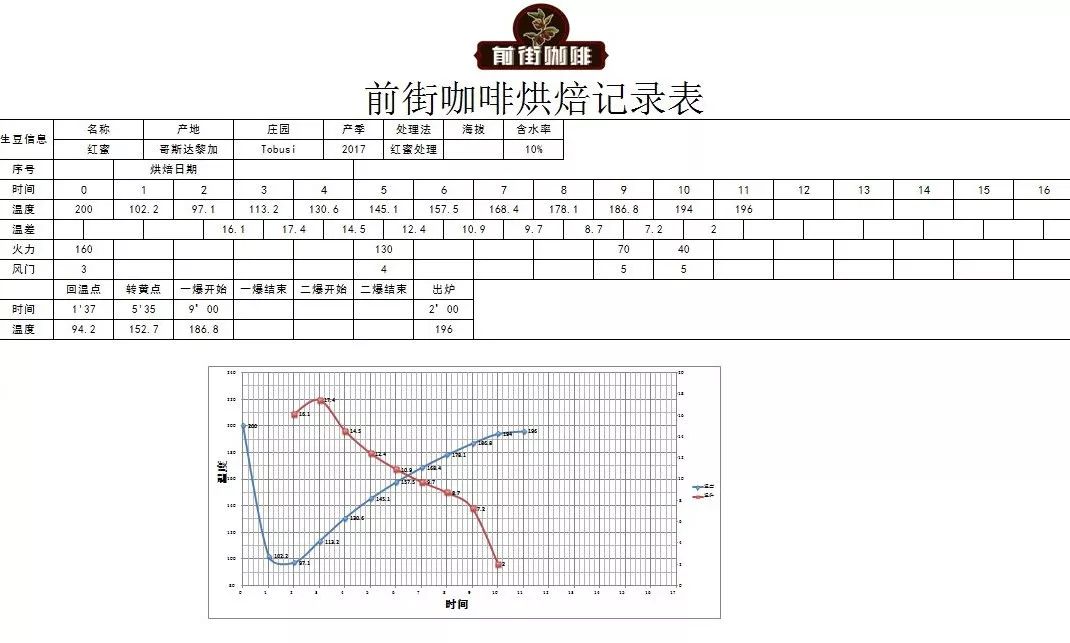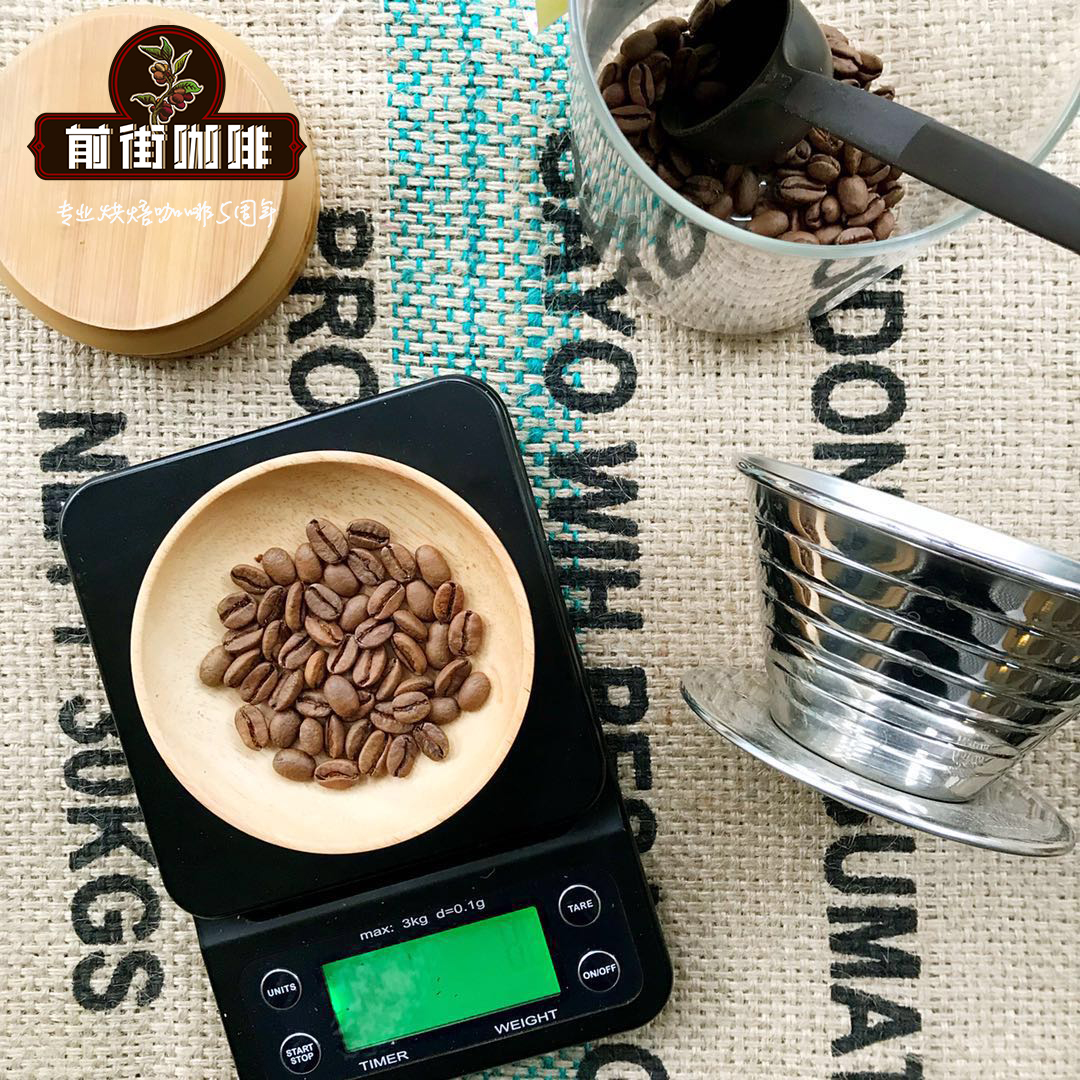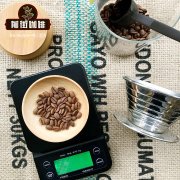Coffee beans are treated by SHB washing in Costa Rica.

Professional coffee knowledge exchange more coffee bean information please follow the coffee workshop (Wechat official account cafe_style)
Costa Rica Tarrazu
Washing treatment of Tara beads in Costa Rica
| 01 | production area profile |
Tarrazu in Costa Rica is one of the major coffee producing areas in the world. The coffee produced is light and pure in flavor and pleasant in aroma. Costa Rica, with its fertile volcanic soil and good drainage, is the first country in Central America to grow coffee and bananas for commercial value. Coffee and bananas are the country's main exports.

Coffee was introduced into Costa Rica from Cuba in 1729 and today its coffee industry is one of the most well-organized industries in the world with a yield of 1700 kg per hectare. Costa Rica, with a population of only 3.5 million, has 400 million coffee trees, and coffee exports account for 25 per cent of the country's total exports. Costa Rica has also benefited from the establishment of the Central American Institute for Agricultural Research (Turrialba of the Central American Agricultural Research Institute, referred to as IAAC) in Tarasu, which is an important international research centre.
High-quality Costa Rican coffee is called "extra hard beans". This kind of coffee can grow above 1500 meters above sea level. Altitude has always been a problem for coffee growers. The higher the altitude, the better the coffee beans, not only because the higher altitude can increase the acidity of the coffee beans and thus increase the flavor, but also because the night temperature at the higher altitude is lower, which can make the trees grow slowly, thus making the coffee beans have a stronger flavor.
In addition, due to the high altitude drop caused by sufficient rainfall, is also very beneficial to the growth of coffee trees. However, while there are many advantages to growing coffee at higher elevations, the resulting additional transport costs must be taken into account, which is likely to make coffee production unprofitable. The coffee industry in Costa Rica has adopted new technologies to increase efficiency, including the use of "electric eyes" to select beans and identify coffee beans of irregular size.
Located in the south of the country's capital, San Jos é, Tarasu is one of the most valued coffee growers in the country. La Minita Tarrazu coffee is a famous local product, but its production is limited, about 72600 kilograms a year. It is grown on a piece of land called La Minita, which is owned by the last three generations of the McAlpine family in the UK. In fact, this land can produce more than 450 tons of coffee a year. But Tarasu Latin America coffee is grown without artificial fertilizers or insecticides, and its harvesting and selection are done by hand, in order to avoid some damage to coffee beans caused by air spray selection.

Other coffees worth mentioning are Juan Vinas,PR, H.Tournon, Windmill,SHB, Monte bello and Ssnta Rosa. Fine coffee is generally grown in Geredia and the central canyon. Another striking type of coffee is Sarchi (one of the five towns that represent Costa Rica's Coffee Road), which grows on the slopes of the Poas Volcano volcano, 53km from San Jose. Saatchi, founded in 1949, has a land area of 30770 hectares and grows sugar cane and coffee. The area is also famous for its handicrafts, attracting tourists from all over the world.
02 | processing method
03 | Analysis of raw beans
Excellent Costa Rican coffee beans are called "extra hard beans", and their classification criteria are:
Special hard bean SHB (Strictly Hard Beans) is above 1200 meters (3900 feet) above sea level.
Good hard bean GHB (Good hard Beans) 1200m above sea level (3900 m / m)
Medium hard bean MHB (Medium Hard Beans) 1000m above sea level (3300m / 1600ft)

The coffee raw bean is small, the defective bean is 2%, and there is some honey on the surface. The jadeite represents the new coffee which grows slowly at high altitude.
Raw bean information:
Country of origin: Costa Rica (Costa Rica)
Producing area: Tarazhu (Tarrazu)
Variety: Kaduai, Kaddura (Catuai)
Altitude: 1500 m
Grade: SHB
Treatment: washing treatment
04 | Baking analysis
Hard bean coffee is coffee that grows at a relatively high altitude, while coffee grown at a lower altitude is generally considered soft bean coffee. Higher altitude and lower temperature make the fruit ripen more slowly, and form harder and less porous coffee beans. Observe the middle line of raw coffee beans. The more open the middle line is, the smaller the density of coffee beans is. If the middle line of the coffee bean is closed, its density will be higher.
Qianjie coffee is recommended to record the data before roasting, the water content, density, origin, treatment method, ambient temperature and humidity in the baking room, etc., and plan your baking curve. Recording the chemical and physical changes during the baking process will help you better understand the final baking results and help improve the baking curve.
This is Kaddura, Kaduai seed, water washing method, high density, uniform bean mesh, full bean shape (bean core to bean surface is thicker) baking method: pull the baking time longer, so adjust the firepower when the dehydration is complete. When baking to a blast, Chen Fengmen opened to the maximum and developed the beans for 2 minutes.

Bake the curve:
Put the furnace temperature to 200 degrees Celsius, adjust the firepower to 160 degrees after opening the throttle for 1 minute, keep the throttle unchanged, bake to 5: 35 ", the temperature is 152 degrees, the bean surface turns yellow, the smell of grass completely disappears, the dehydration is completed, the firepower is adjusted to 130 degrees, and the throttle is changed to 4.
In the 8th'40 minute, ugly wrinkles and black markings appear on the bean surface, and the smell of toast obviously changes to the smell of coffee, which can be defined as a prelude to an explosion. At this time, listen carefully to the sound of the explosion point, start to explode at 9: 00 ", turn the firepower down to 70 degrees, and the throttle is fully open (adjust the firepower very carefully, not so small as to be free of bursting sound), and put the pot at 196.0 degrees.

Cup test report:
Dry fragrance: floral, creamy, citrus, lemon, sugarcane sweet
Wet fragrance: toffee sweetness, white grapes, wild berries
Sipping: Brin, orange, peach, grapefruit, juice, natural sweetness, meticulous taste, perfect and balanced as a whole.
04 | Cooking analysis
Stirring steaming which is popular in Europe and America
Coffee beans suitable for light roasting
European-American mixing method: cross stirring with a mixing stick in the stewing stage, which is also a branch of the three-stage style, which was developed after Matt Perger, the champion of the 2012 World Cooking Competition. This method can effectively enhance the release of aromatic substances in coffee beans, magnify the flavor advantages of coffee beans, enhance the taste of coffee, will not be too thin.

As for the way of brewing, hand brewing and siphon brewing are the best.
V60 filter cup, 15g powder, water temperature 90 degrees, grinding 3.5
The ratio of water to powder is close to 1:15
27 grams of water is steamed for 28s.
Section: 27-105-88, time is 1:50 (steaming starts)

Important Notice :
前街咖啡 FrontStreet Coffee has moved to new addredd:
FrontStreet Coffee Address: 315,Donghua East Road,GuangZhou
Tel:020 38364473
- Prev

The difference between fancy coffee and single coffee what is the difference between fancy coffee and single coffee
Professional coffee knowledge exchange more coffee bean information please pay attention to coffee workshop (Wechat official account cafe_style) individual coffee _ Single Origin_ individual coffee beans _ single coffee and hand brewed coffee we can often see single coffee or fancy coffee, or even blended coffee, many people may be confused, so what exactly does this mean? Today, the editor
- Next

Starbucks Jamaica Blue Mountain Coffee altitude treatment Flavor Jamaican Blue Mountain Coffee Bean label pattern
Professional coffee knowledge exchange more coffee bean information please follow the coffee workshop (Wechat official account cafe_style) Jamaica Blue Mountain Coffee _ Blue Mountain Coffee Price Jamaica Blue Mountain Coffee Flavor boutique beans Starbucks Coffee-Jamaica Blue Mountain Coffee STARBUCKS RESERVEJAMAICA BLUE MOUNTAIN full-bodied floral aroma accompanied by citrus fruit flavors and smooth chocolate
Related
- Detailed explanation of Jadeite planting Land in Panamanian Jadeite Manor introduction to the grading system of Jadeite competitive bidding, Red bid, Green bid and Rose Summer
- Story of Coffee planting in Brenka region of Costa Rica Stonehenge Manor anaerobic heavy honey treatment of flavor mouth
- What's on the barrel of Blue Mountain Coffee beans?
- Can American coffee also pull flowers? How to use hot American style to pull out a good-looking pattern?
- Can you make a cold extract with coffee beans? What is the right proportion for cold-extracted coffee formula?
- Indonesian PWN Gold Mandrine Coffee Origin Features Flavor How to Chong? Mandolin coffee is American.
- A brief introduction to the flavor characteristics of Brazilian yellow bourbon coffee beans
- What is the effect of different water quality on the flavor of cold-extracted coffee? What kind of water is best for brewing coffee?
- Why do you think of Rose Summer whenever you mention Panamanian coffee?
- Introduction to the characteristics of authentic blue mountain coffee bean producing areas? What is the CIB Coffee Authority in Jamaica?

